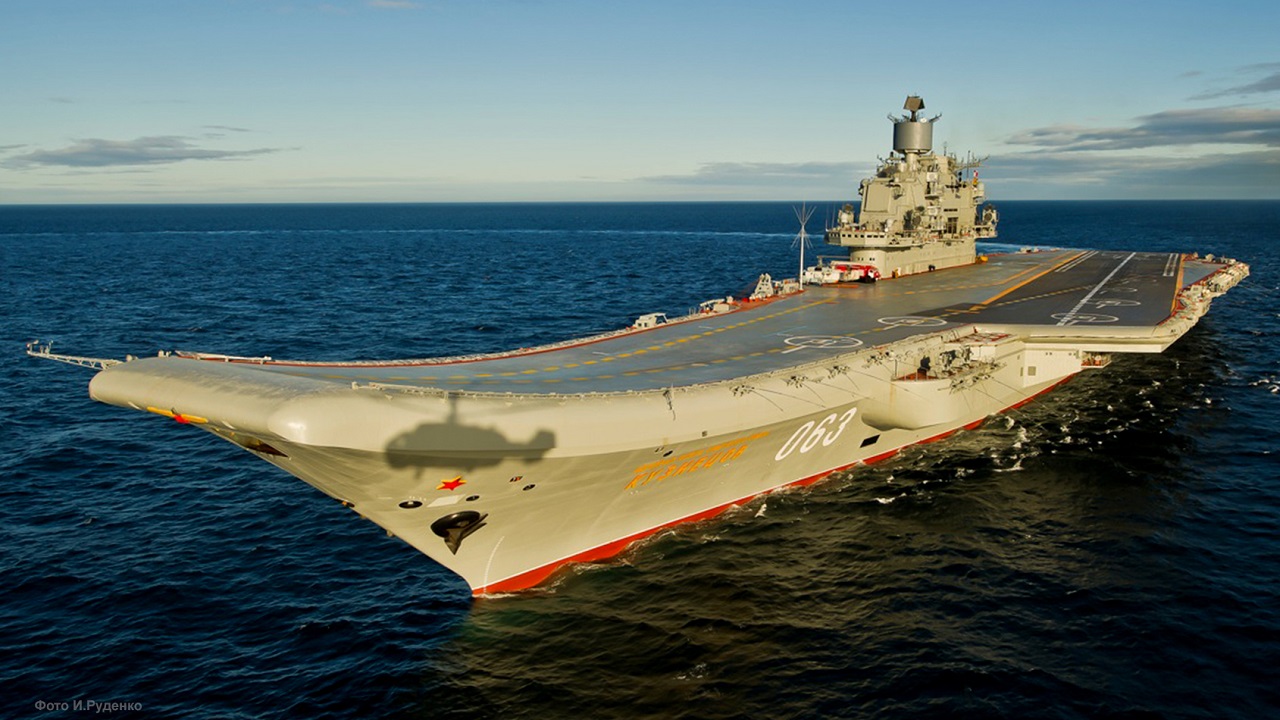Russia keeps pouring more and more money into its last aircraft carrier, the Admiral Kuznetsov, built during the days of the Soviet Union. The ship has barely ever gone to sea and seems like it will be in refit for what looks like forever. Considering Moscow’s situation in Ukraine, the Russian Navy could better spend its Rubles elsewhere, as this expert explains: Last month, China’s Navy may not have made a great leap forward, but it took a significant step toward becoming a major carrier power with the launch of the domestically-designed and indigenously-built Type 003 carrier. Whilst still a conventionally-powered warship, it will enable the People’s Liberation Army Navy (PLAN) to expand its power projection throughout the Indo-Pacific.
By contrast, the Kremlin may have to accept the fact that it is a land-based power and give up any naval ambitions entirely. Its goals of having a far-reaching presence with its naval force have hit a number of setbacks after it launched its unprovoked and unwarranted invasion of Ukraine. As long as the conflict continues, Russia will be unable to send warships to – and more importantly – from the Black Sea.
In addition, the Russian Navy’s Black Sea Flagship, the guided-missile cruiser Moskva, was sunk by Ukrainian land-based anti-ship missiles. The loss of the flagship, the most powerful warship sunk since the Second World War, was entirely unexpected. Yet, it served to put the spotlight on the sorry state of the Russian Navy.
Then there is the Admiral Flota Sovetskogo Soyuza Kuznetsov (Admiral of the Fleet of the Soviet Union Kuznetsov). The cursed carrier – technically a heavy aircraft cruiser – has been undergoing a refit since 2018, and it is truly becoming a matter of if not when it might return to service.
Earlier this month, it was reported that the warship had suffered another repair delay and won’t likely reenter service until 2024… at the very earliest. A source in the Russian defense sector told state media that there have been defects in the work, and as a result, Admiral Kuznetsov will remain in dry-dock for refit longer than initially planned.
A Cursed Warship?
Even before the current refit began, Admiral Kuznetsov had earned a dubious reputation. In addition to a number of unfortunate malfunctions and equipment breakages, which included snapped arresting wires that resulted in multiple aircraft crash landings; the carrier had to be towed back to port after breaking down in a storm in late 2015.
The refit was meant to modernize the vessel, but it has been plagued with problems.
In November 2018, Admiral Kuznetsov was damaged when a 70-ton floating crane fell on the warship’s flight deck, which tragically killed one worker and injured four more. It was just over a year later that a fire broke out in the engine room during a welding accident; and it resulted in the death of two, while 14 more suffered injuries from fire and smoke inhalation. In addition, the actual drydock, which was vital to the repairs, was also damaged during a power outage, further delaying the refit.
Corruption has contributed to the lack of progress on the carrier’s refit. In March 2021, Yevgeny Zudin, general director of Shipyard No. 10 in Polyarny, was arrested under suspicion of the theft of 45 million rubles (approximately $600,000) that had been allocated to the repair of the Russian Navy’s Northern Fleet flagship.
Cut The Losses
Though an exact figure hasn’t been publicized, Russia has already spent a fortune modernizing a vessel that was designed during the Cold War.
She was laid down in April 1982 – 40 years ago – but only completed in the mid-1990s. Unlike western vessels that use gas turbines or nuclear power, the Russian flattop uses mazut as fuel, which often results in a trail of heavy black smoke that can be seen from great distances. Such a smoke signal is hardly ideal as it practically announces the location of the carrier.
Moreover, its endurance is a mere 45 days, at best, while Russia has few ports where the aircraft cruiser could operate from year-round. Given these factors, the best option would be for the Kremlin to cut its losses and deep-six the carrier. For now, it is just a hole in the water that Russia keeps pouring money into – with no end in sight.
Now a Senior Editor for 1945, Peter Suciu is a Michigan-based writer who has contributed to more than four dozen magazines, newspapers and websites. He regularly writes about military hardware, firearms history, cybersecurity and international affairs. Peter is also a Contributing Writer for Forbes.

